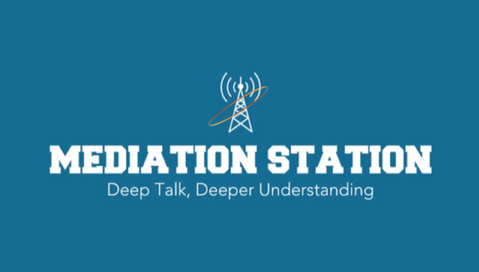"Trauma Informed Mediation"
TEDx Talk, Overland Park
Dawn Kuhlman
January 31, 2019
TEDx Talk, Overland Park
Dawn Kuhlman
January 31, 2019
|
Brain/Body Dysregulation
TIM encourages mediators to consider the neuroscience of mediation. Are clients operating out of their prefrontal cortex or the amygdala? The amygdala activates the "fight, flight, freeze" response, whereas the use of prefrontal cortex leads to brainstorming and problem-solving. Are clients responding or reacting to the environment? Is the client able to self-regulate or does the mediator need to guide the client in emotion regulation skills? Are clients operating out of the fear-driven brain? The TIM approach facilitates: Empowerment and recognition When clients are operating out of their fear-driven brain, there is an inability to see options and practice perspective-taking. The mediation process benefits when clients don't feel stuck, can see their choices, and are able to have empathy for the person across from them. Mindfulness of cognitions, emotions, and behaviors A trauma-informed approach encourages both the parties and the mediator to increase self-awareness. When a person is dysregulated there is a decrease in awareness of thoughts, emotions, and behaviors. Dysregulation leads to a reliance on emotional reactivity rather than thoughtful responding. Mediators can guide clients on replacing Automatic Negative Thoughts (ANTs) with positive or neutral thoughts; practice emotion regulation techniques by deep breathing or sitting in silence; and identify which behaviors are helpful and hurtful to the mediation process. Ability to mediate A client's ability to mediate exists on a mental continuum with ABLE on one end and UNABLE on the other. Unfortunately, an increase in dysregulation is associated with an inability to have a successful mediation. The amygdala is the driving force for the mediation and the system is not able to be regulated during the mediation process. Mediators need to be less focused on agreement and practice acceptance of the client's placement on the continuum. Community resources Clients who are not able to do the mediation process appear to be experiencing severe mental anguish. Feelings of hopelessness and helplessness can pervade the mediation session and lead to "secondary trauma" in the mediator. In an effort to better understand and prevent the impact of secondary trauma, evidence-based brain-based treatments - including EMDR, neurofeedback, Brainspotting, Emotional Freedom Technique (EFT), and Somatic Experiencing - can help clients with their long term emotional regulation. A trauma-informed approach encourages collaboration with community providers. Clients can be provided with a list of mental health providers, and it is the client's decision via self-determination to contact the providers and determine which treatment(s) may best meet their needs. |
"Informing About Trauma Informed Mediation"
Mediation Station Podcast, Toronto, ON, Canada Gregg Fenten & Dawn Kuhlman April 21, 2019 "The Neuroscience of Conflict: Defensive v. Non-Defensive Communication"
SILA Foundation webinar Dawn Kuhlman March 26, 2020 "Trauma Informed Communities"
Johnson County Community College Ed Talk with Dawn Kuhlman May 12, 2020 **Requires password "IMPACT" to view |




